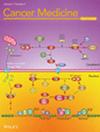Bioinformatics Combined With Biological Experiments to Identify the Pathogenetic Link of Type 2 Diabetes for Breast Cancer
Abstract
Background
Type 2 diabetes mellitus (T2DM) constitutes a significant risk factor for breast cancer (BC), with affected women exhibiting a two- to three-fold increased likelihood of developing BC. Furthermore, women diagnosed with both BC and T2DM tend to experience poorer prognoses and exhibit greater resistance to various treatments compared to their non-diabetic counterparts. Consequently, elucidating the comorbidities associated with T2DM and BC is instrumental in enhancing the diagnostic and therapeutic strategies for BC.
Methods
A series of bioinformatics methods including weighted gene co-expression network analysis (WGCNA), differentially expressed gene (DEG) analysis, machine learning, and single-cell sequencing analysis were used to identify the pathogenetic molecules of T2DM for BC. Biological experiments including CCK-8, colony formation, wound healing, transwell assay, immunohistochemistry, and immunofluorescence were performed to determine the molecule effect.
Results
By conducting WGCNA and DEG analysis on the profiles of T2DM (GSE25724 and GSE20966) and the TCGA cohort of BC, we identified a total of 27 common hub genes shared between T2DM and BC. These genes were significantly enriched in pathways related to cell differentiation, cellular developmental processes, focal adhesion, and the MAPK signaling pathway. Notably, among these 27 genes, CCNB2, XRCC2, and CENPI were associated with poor prognosis in BC. Moreover, single-cell RNA sequencing analysis revealed that CCNB2, XRCC2, and CENPI are enriched in cancer cells within BC tissues. Additionally, we observed that CCNB2, XRCC2, and CENPI were elevated in BC tissues provided by patients with a diabetes history and associated with KI67 expression. Hyperglycemia treatment elevated the expression levels of CCNB2, XRCC2, and CENPI in BC cells, which correlated with increased cell proliferation and mobility. Conversely, the knockdown of these genes partially mitigated the pro-proliferative and pro-migratory effects induced by hyperglycemia in BC cells.
Conclusion
Our findings suggested that CCNB2, XRCC2, and CENPI may serve as key pathogenic mediators linking T2DM and BC. Targeting these molecules could potentially attenuate the adverse impacts of T2DM on BC progression.


 求助内容:
求助内容: 应助结果提醒方式:
应助结果提醒方式:


